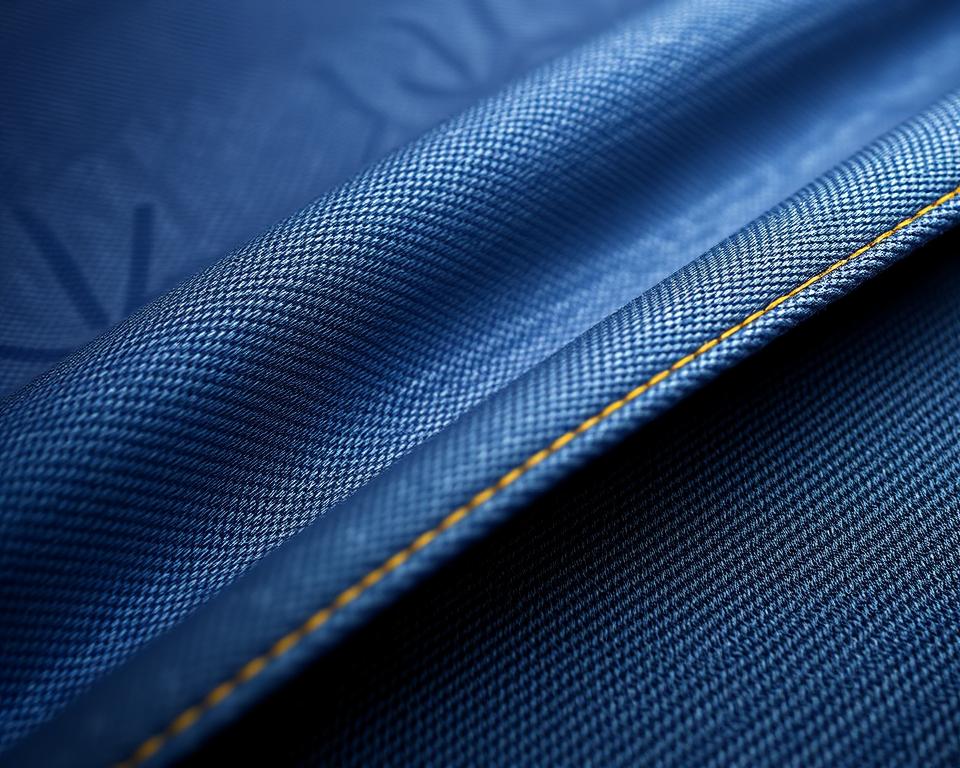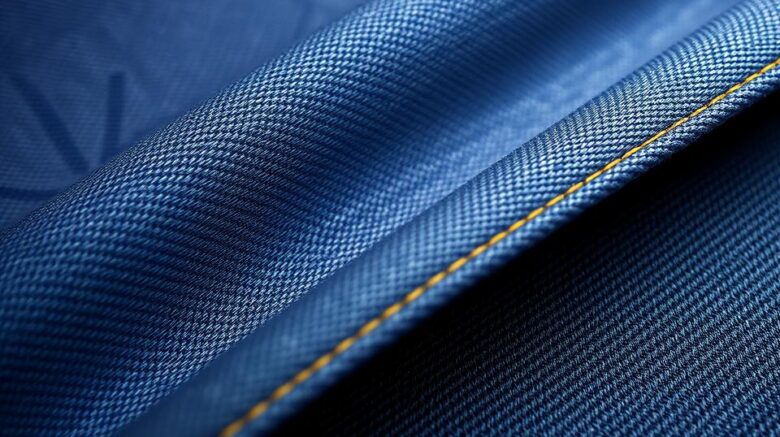The Ultimate Manual to Superior denim Edge-to-Edge Fabric
Ever wondered why some pants feel as though they are made to last a lifetime? Everything revolves around the components and craftsmanship. Consider the increasing trend of premium selvedge. This isn’t just any material—it exemplifies excellence and tradition.
Currently, more people are choosing these timeless materials for their durability and iconic ewingfly denim charm. Whether you’re a do-it-yourself sewist or a denim enthusiast, there’s a unique quality about working with high-quality cotton and yarn. It’s not just about constructing pants; it involves producing a legacy.
At Core Fabrics, we’ve assembled a selection of 14.25oz certified organic cotton and flexible choices. These materials are ideal for a spectrum ranging from raw jeans to designer jacket designs. Prepared to dive into the universe of exceptional fabrics? Let us delve in.
What Is Denim Selvedge Fabric?
What is it that makes some trousers stand out with their distinctive, finished without extra steps borders? The secret lies in the selvedge denim, a premium fabric celebrated for its robustness and retro charm. Differing from regular textiles, such material is produced using classic methods that have proven their worth.
What Selvedge Denim Means
Selvedge denim is manufactured with retro shuttle looms, which generate minimal widths of about 30-35 inches. These looms weave the material in a method that delivers self-finished edges, often marked by a characteristic red line. Such a process guarantees the textile is firmly crafted and extremely robust.
Contemporary looms, in contrast, yield wider textile but lack the equivalent of craftsmanship. The imperfections in selvedge, like misaligned seams or uneven textures, are celebrated as part of its charm. This philosophy, often referred to as “wabi-sabi”, exalts the beauty of organic flaws.
Production of Selvedge Denim
The manufacturing of selvedge denim entails a detailed process. These looms weave the filling yarns in alternating directions, resulting in a dense and sturdy material. This process stands in contrast with new-age looms, which focus on rapid output over quality.
Companies such as Karson Denim preserve traditional Japanese methods from the 1990s. They purposefully add anomalies to preserve the true character of the material. Every item is evaluated on a 4-point system, confirming it satisfies the peak requirements of quality.
| Attribute | Selvedge Denim | Modern Denim |
|---|---|---|
| Width | 30-35 inches | 60+ inches |
| Weaving Process | Shuttle Loom | New-Age Loom |
| Finish | Uneven, Imperfect | Uniform |
| Sturdiness | Superior | Average |
“The beauty of selvedge is found in its flaws—each flaw tells a story skill and legacy.”
The History of Selvedge Denim
From humble beginnings to worldwide renown, the story of these fabrics is rich and moving. Initially designed as durable workwear in seventeenth-century France transformed into a mark of classic elegance and craftsmanship.
Origins in Traditional Weaving
The roots of this material trace back to Nîmes, France, where it was known as “serge de Nîmes.” First intended for workers, it was crafted out of sturdy cotton and yarn. Its strength made it a favorite among the workforce during the Gold Rush.
During the twentieth century, it had transformed into a essential element for pants. The shuttering of the Cone Mills White Oak facility became a pivotal moment. This change enabled Japanese artisans to reintroduce classic fabric-making practices.

Evolution in Modern Denim Production
After World War II, Japan embraced old-school American culture. Artisans repaired old looms to manufacture genuine reproductions. This commitment to craftsmanship secured the continuance of selvedge as a niche product.
In modern times, innovations from Italy and Turkey have brought forth environmentally conscious combinations and flexible variants. These advancements have widened the appeal of this everlasting fabric. Here at Core Fabrics, we procure internationally, from Montréal to Asia, to deliver to you the top-notch standards.
“The history of selvedge is a celebration of the enduring value of craftsmanship and legacy.”
Why Choose Selvedge Denim?
What makes selvedge denim shine in the world of premium textiles? Its special characteristics and incomparable robustness render it popular among aficionados and designers alike. Be it that you are making pants or a sharp jacket, this textile delivers a mix of heritage and contemporary charm.
Unique Qualities of Selvedge Fabric
Selvedge denim is known for its tight weave, which enhances tear resistance and wear patterns. Differing from regular textiles, denim selvedge fabric is produced using classic shuttle looms, yielding a denser and extra robust material. In doing so, it secures that each piece has a unique texture and individuality.
Key features include:
- Hairy, rigid raw denim juxtaposes against softened, pre-washed stretch fabrics.
- The sanforization process ensures predictable sizing, while raw options offer a shrink-to-fit adventure.
- Weight options range from 9.5oz Eco Finish to 14.25oz Organic, catering to different needs.
Durability and Longevity
One of the most remarkable aspects of selvedge denim is its enduring nature. The tighter weave both reinforces strength and permits characteristic wear patterns over time. This renders it a valuable investment for those seeking timeless pieces.
Key points to consider:
- Fabrics weighing between 12oz and 14oz are perfect for form-fitting jackets and jeans that mellow with time.
- For classic jean longevity, the 14.25oz True Indigo is a top recommendation.
- Green alternatives, including recycled cotton with indigo blends, contribute to a sustainable collection.
At Core Fabrics, our collection includes a variety of options to suit your needs. Spanning from raw finishes to sanforized treatments, each selection is designed for superior quality and value.
Selvedge Denim vs. Wide Denim
For making long-lasting and trendy pieces, the decision of textile is pivotal. Two popular options are selvedge and wide denim, each possessing distinct traits. Comprehending their variances guides the ideal material for your endeavor.
Contrasting Weave Techniques
Selvedge denim is produced using classic shuttle looms, yielding limited spans of 30-35 inches. This striped selvedge denim fabric method creates secure finishes, often accented with a distinctive red line. Wide denim, on the other hand, uses modern projectile looms, producing expansive widths of over 60 inches.
Old-style shuttle looms yield roughly 3m per minute, while modern projectile looms reach speeds of 30 meters per minute. Such speed differences influence both the cost and the texture of the final product.
Benefits and Drawbacks
Selvedge denim is celebrated for its superior quality and strength. Its narrow width renders it perfect for projects where exposed edges or decorative patches are required. However, it can be pricier, averaging $23 per meter.
Wide denim is more cost-effective, typically costing $8 per half-meter. Its broader span minimizes excess, ideal for large projects like furniture covering. However, it falls short of the unique edge finish of selvedge.
| Attribute | Selvedge Denim | Wide Denim |
|---|---|---|
| Measurement | 30-35 inches | 60+ inches |
| Method | Shuttle Loom | Modern Projectile |
| Rate | 3 meters per minute | 30m per minute |
| Price | $23/meter | $8/half-meter |
When precise, structured edges are required—as in Grainline Thayer jackets—selvedge wins out. Conversely, wide denim is ideal for extensive projects due to its efficiency. Evaluate your project specifications to choose wisely.
Maximizing Your Selvedge Denim
Crafting with high-end textiles raises your projects to a new standard. Be it making trousers, blazers, or skirts, understanding the basics of yardage, sewing techniques, and care ensures a professional finish. We will examine ways to best utilize this everlasting material.
Yardage Needed for Jeans and Jackets
When planning your project, calculating the right amount of material is crucial. Men’s jeans typically require roughly 3-3.3 yards, factoring in flaws and potential shrinkage. Trucker-style jackets generally demand about 3.3 yards, while skirts can be made with just 2 yards.
Creative pattern placement can help manage imperfections in the material. Rather than avoiding imperfections, incorporate them into your pattern for distinctive style.
| Project | Required Yardage |
|---|---|
| Male Jeans | 3-3.3 yards |
| Trucker-Style Jacket | 3.3 yards |
| Skirt | 2 yards |
Sewing Techniques and Maintenance
Using the right tools and techniques ensures a polished result. Choose #70 to 110 pins and presser foot attachments suitable for thick fabrics. Use Gütermann rPET thread for effective contrast stitching.
Here are some additional tips:
- A tailor’s clapper helps deliver defined creases without unwanted shine.
- Our denim kits from Core Fabrics comprise topstitch thread, rivets, and 9mm jeans buttons to ensure a refined result.
- When sturdy borders are needed, such as in jackets, selvedge is optimal.
Correct care ensures your garments last longer. Limit washing and allow to air dry for optimal durability. With these tips, your projects will stand the test of time.
In Closing
Crafting with premium materials isn’t just about durability—it’s about creating something with character. Selvedge denim embodies this ideology, merging craftsman allure with long-lasting quality. Whether you’re sewing jeans or a structured jacket, this material tells a story with every stitch.
Core Fabrics simplifies your creative journey. Try our swatch service to feel the texture and weight before committing. Furthermore, take advantage of free shipping for orders above $150 USD in North America.
Looking ahead, eco-friendly blends and vintage washes are shaping the future of cotton textiles. These trends offer new ways to add sustainability and style to your wardrobe.
Prepared to immerse yourself in superior fabrics? Shop now and discover the value of crafting with purpose. Your future project might just be that lasting masterpiece.
